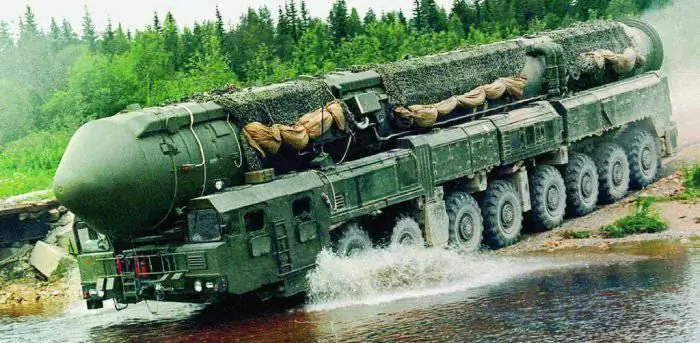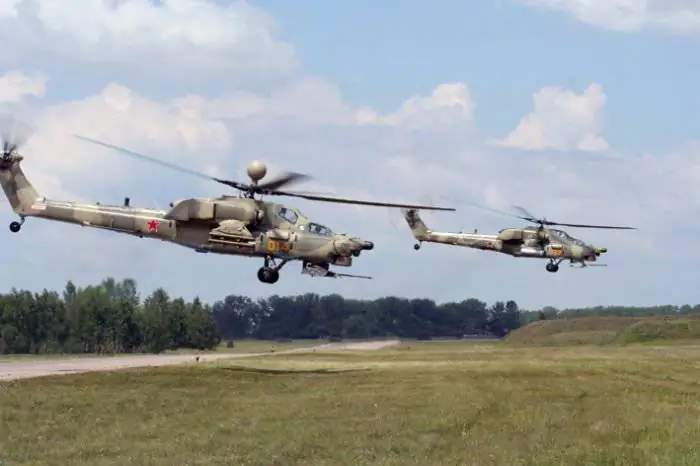- Author Matthew Elmers [email protected].
- Public 2023-12-16 21:49.
- Last modified 2025-01-24 09:17.

In the near future, a transition will be made from the obsolete Topol to a modern complex of ground components of the Strategic Missile Forces, the RS-24 Yars multi-unit. The naval component will receive RSM-54 Sineva at its disposal, which will be installed on the existing Dolphin submarines, as well as RSM-56 Bulava will be installed on the new 955 Borey submarine cruisers. Over the past couple of years, Bulava has received so many reviews, both positive and negative, that the government was forced to make rather tough political decisions, and there is a huge share of the likelihood that the project will soon be finalized and put into operation.
But if everything is more or less clear with the Bulava, then an information controversy unfolded around the further development of Russian ICBMs. A significant number of experts continue to assert that at this stage it is necessary to create new heavy complexes on liquid fuel, which in the near future will be able to completely replace the obsolete R-36M2 missiles. However, designers from the Moscow Institute of Heat Engineering, who at one time created Topol, Yars and Bulava, argue that there is no need to develop such systems, they are too expensive, and the mine launchers that exist are extremely vulnerable to them. There is no doubt that during the foreseeable future, the degree of information polemics on this issue will not decrease.
In terms of protecting the heavenly borders, one of the most important decisions of recent times is the organization of a unified and inseparable aerospace defense, which will combine air defense, missile defense, warning systems of a possible missile attack and space control systems. The main "beneficiary" of the possible rearmament of the VKO will undoubtedly be the S-400 Triumph anti-aircraft missile system, which is produced on the basis of the Almaz-Antey air defense concern. In particular, two regimental complexes "Triumph" have already been deployed, both are used to provide cover for the industrial region of Moscow. According to the latest statements, in the near future the third S-400 Triumph regiment may enter combat duty in the Far East.

The S-400 "Triumph" complex has a wide range of means of destruction, and it integrates all the rich experience of the developers of NPO Almaz, who, during the 90s, improved the S-300P series of air defense systems and gave it completely new functions, turning it into versatile and powerful air defense. According to the Russian military, the S-400 Triumph can also solve combat missions of non-strategic missile defense, intercepting targets traveling at speeds up to 4800 m / s.
To date, the anti-aircraft missile units of the Russian Air Force have practically completed the consolidation of the existing military air defense units. It is worth noting that the latter are far from being in the best condition, in particular this applies to the remaining parts, which are equipped with the S-300V complex. It is safe to say that the "stick" is an outgoing air defense system and in the near future, along with the most obsolete systems from the S-300P series, it will be replaced by modern S-400 air defense systems. The military suggests that the "Triumph" will become a single air defense complex to defend the country.
Closer to the middle of the new decade, it is planned to put into service a completely new S-500 air defense system. At the moment, it is rather difficult to say anything specific about her, but it is possible to formulate a few superficial points. It is quite obvious that the S-500 will be a mobile air defense / missile defense system using a whole line of missiles in ammunition to support aerodynamic and ballistic targets. According to Vladimir Popovkin, First Deputy Defense Minister, the S-500 will be able to defeat airborne hypersonic targets moving at speeds up to 7000 m / s. In addition, experts note a very high likelihood of giving the new system the capabilities of transatmospheric interception and destruction of warheads carried by ballistic missiles.
The Russian aviation industry is perhaps the only structure that, even in the disastrous 90s, continued to remain at a fairly high level. Despite all the problems, the aviation industry was able to maintain its high positions in the world military aviation market. The future heavy platform of the fifth-generation domestic fighter, the Sukhoi T-50, has been undergoing flight tests for a year. Today it is too early to talk about the date of its adoption by the Russian Air Force, but it is roughly called 2017-2018.
During the time before the preliminary specified date, the RF Air Force will be updated through the procurement of modernized aircraft, including radically modernized ones. First of all, we are talking about ordering 48 Su-35S fighters, which will enter service with three air regiments of the Air Force. The Su-35S is a 4 ++ generation aircraft that will act as an "insurer" during the protracted transition of the Air Force to generation 5 aircraft. In addition, the air vehicle has a rather attractive export potential.

Significant changes are expected in the fleet of front-line bombers, which are also planned to be significantly updated. The Su-24 is expected to be replaced by the Su-34, a pair of which has already taken part in hostilities during the five-day war with Georgia. This aircraft is based on the significantly increased Su-27 combat training series. One of the features of the Su-34 will be the use of high-precision weapons in its consumables, which will increase the capabilities of aviation when striking ground targets in adverse weather conditions.

Significant changes are expected in the helicopter divisions as well. In addition to the growing order for the supply of modernized Mi-8AMTSh transport helicopters, the Russian Air Force orders large quantities of Mi-28N attack helicopters. These helicopters should become a worthy replacement for the Mi-24 for direct support of the troops. There is evidence that deliveries of the Ka-52 attack helicopter surrounded by legends are planned, which for twenty years has not lost its popularity both in export contracts and in Russian units.

Equipping the ground forces with military equipment looks, to put it mildly, not cloudless, and this situation will obviously not receive a final resolution in the near future. This is due to many reasons, including the refusal to further develop the T-95 tank, which many experts called very promising. The tank passed the program of state tests in full, and the refusal of its further implementation leaves a number of incomprehensible and unpleasant questions. The refusal to start production of the T-95 and the introduction of restrictions on the purchase of the T-90 can lead to a gradual degradation of the already rather damaged personnel potential of designers and manufacturers, and will also have a negative impact on the rate of raising funds required to modernize existing production facilities.
The situation with the line of production of wheeled maneuverable "armor" (BTR) for arming medium motorized rifle brigades is completely incomprehensible. Russian enterprises offer the manufacture of BTR-82 and BTR-90. However, the Ministry of Defense has publicly disowned the use of the BTR-80/82 series. The BTR-90 is configured in a manner similar to the BTR-80/82, which again makes one doubt its bright prospects.
Military shipbuilding is perhaps one of the most costly and “longest” branches of the military industry. Considering the systemic problems accumulated over many years with the equipment of the army as a whole, it was difficult to expect that the Russian leadership would show an increased interest in building a modern ocean-going fleet. Since Soviet times, the shipbuilding base has been rather limited in its capabilities and the expanded program for building a new powerful fleet simply will not be able to pull, even despite the possible allocation of significant funds for the implementation of the re-equipment program.

The strategic atomic missile carrier of the 955 Borey type has already entered service with the submarine fleet, and in the near future the delivery of multipurpose submarines of the 885 Yasen type is expected. At the end of 2011, the lead boat "Severodvinsk" is expected to join the fleet. Initially, the fleet announced a huge series of more than three dozen boats, but now it is ready to limit itself to a more modest order of six or seven ships. Obviously, the fleet also needs light boats - "hunters". However, so far nothing is known about the plans for the manufacture of such a ship, and this niche will be occupied by the remnants of the Soviet legacy: the submarines of projects 971 "Shchuka-B" and 671RTMK "Shchuka".

They prefer to update the surface fleet "from below". New frigates of type 22350 - "Admiral Gorshkov" and corvettes of type 20380 - "Guarding" are on the stocks. These warships are being built according to a new logic, which implies the installation of universal ship complexes - vertical launchers capable of using a range of anti-aircraft, anti-ship and anti-submarine missiles.






